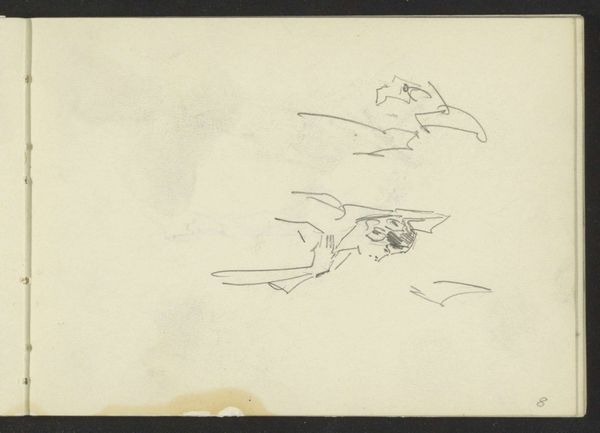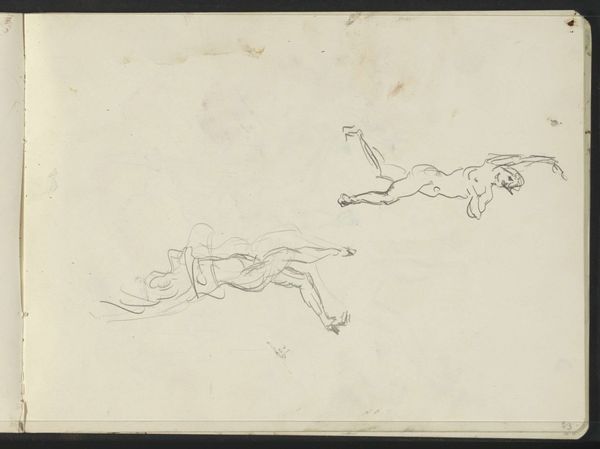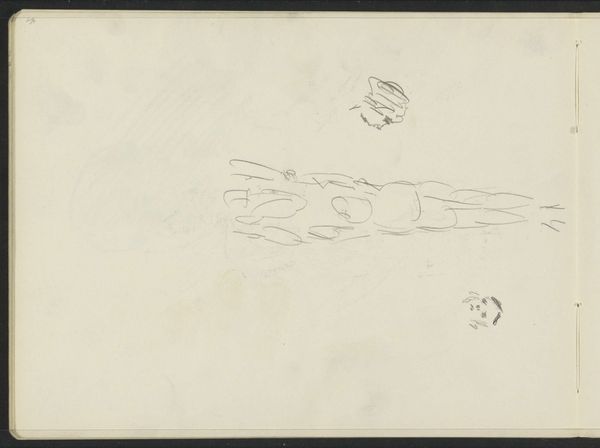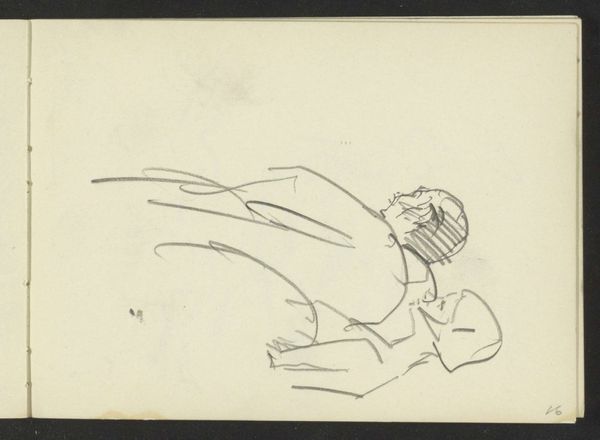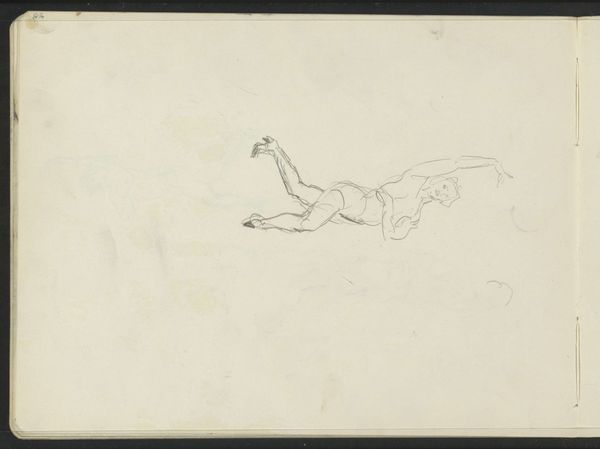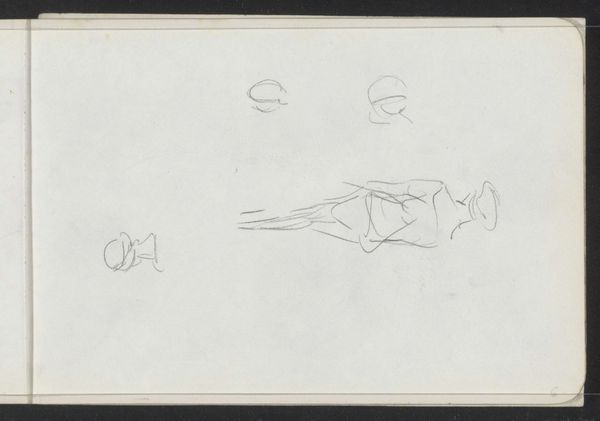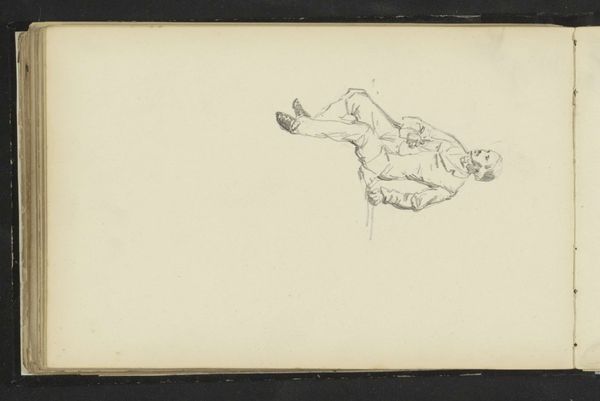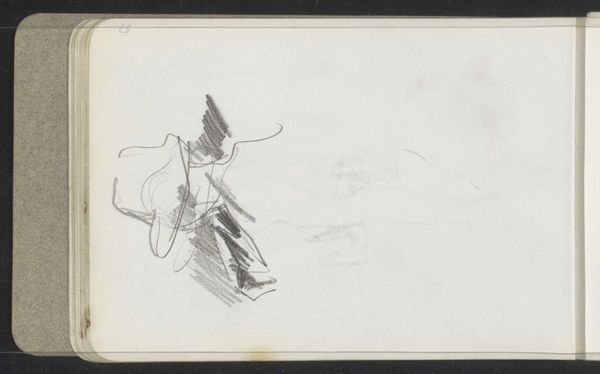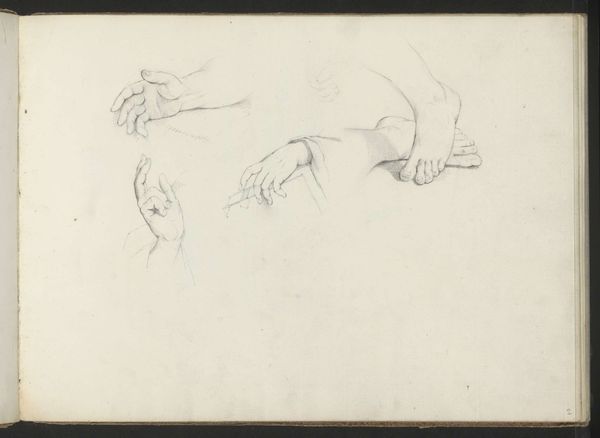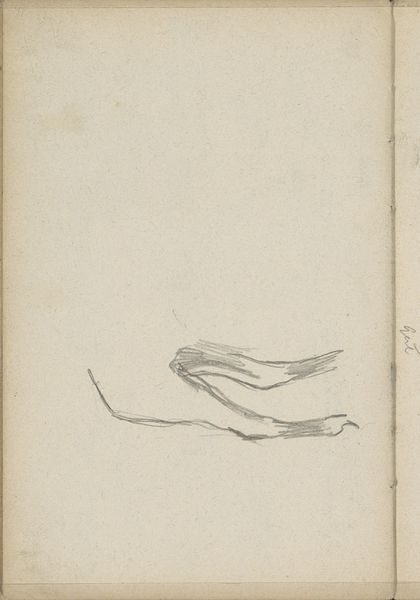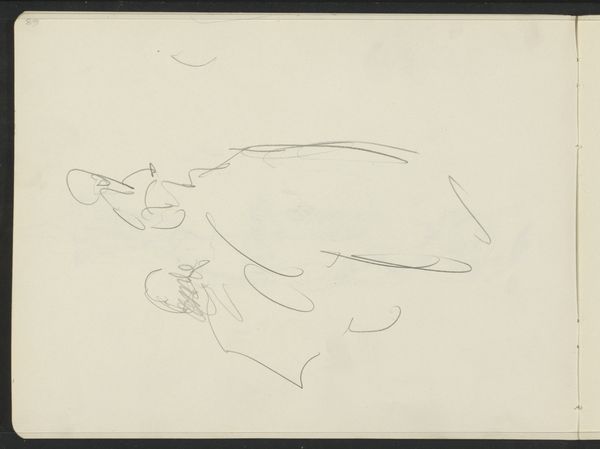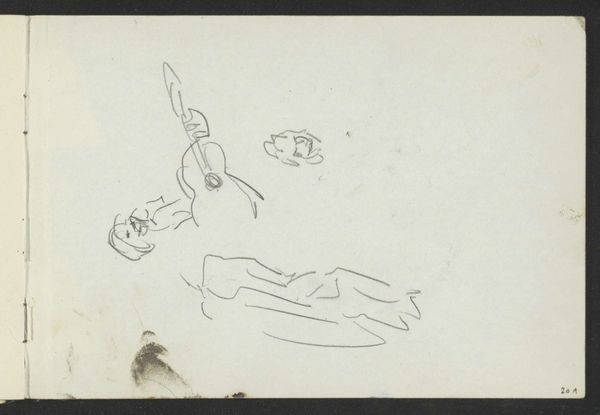
Copyright: Rijks Museum: Open Domain
Editor: Here we have Isaac Israels' "Two Figure Studies," likely created sometime between 1875 and 1934. It's a pencil drawing, and it feels very spontaneous and free. What can you tell me about this piece? Curator: Well, let's consider the materials first. A simple pencil drawing allows for quick execution, suggesting the artist was more interested in capturing fleeting observations than creating a highly finished piece. The choice of paper too-- probably cheap sketch paper in a bound book? Consider where he might be making these sketches - at the beach, in a cafe. The economic conditions would play into this choice of readily available, affordable material. Editor: That makes sense. I was focused on the poses, but the actual materials tell a story about the artist’s practice. How does the process inform our understanding? Curator: Exactly. Look at the tentative lines. He isn't interested in a perfect, idealized body. He's depicting real people, probably working-class, relaxing or resting. The impressionistic style fits this – a snapshot of everyday life without glorification. Think about the art market at this time-- what were people buying? Did they want these rough sketches, or highly polished portraits of society's elite? Where do you think sketches like this would circulate? Editor: Maybe not in the mainstream galleries then. More likely in artist circles or perhaps as studies for larger works that haven't survived. So the value lies in their process and materiality because that contextualizes the labor that went into the high-status art of the time? Curator: Precisely! These figure studies offer us a glimpse into the artist's working method and, by extension, the world he inhabited and chose to depict through easily-acquired tools of pencil and paper. It shows that the act of *making* is just as important as any polished finished work. Editor: I hadn't thought about it that way. Looking at art through the lens of materials and their context gives such a fresh perspective! Thank you. Curator: My pleasure! It reveals so much more about the artist, society, and the art itself, doesn't it?
Comments
No comments
Be the first to comment and join the conversation on the ultimate creative platform.
